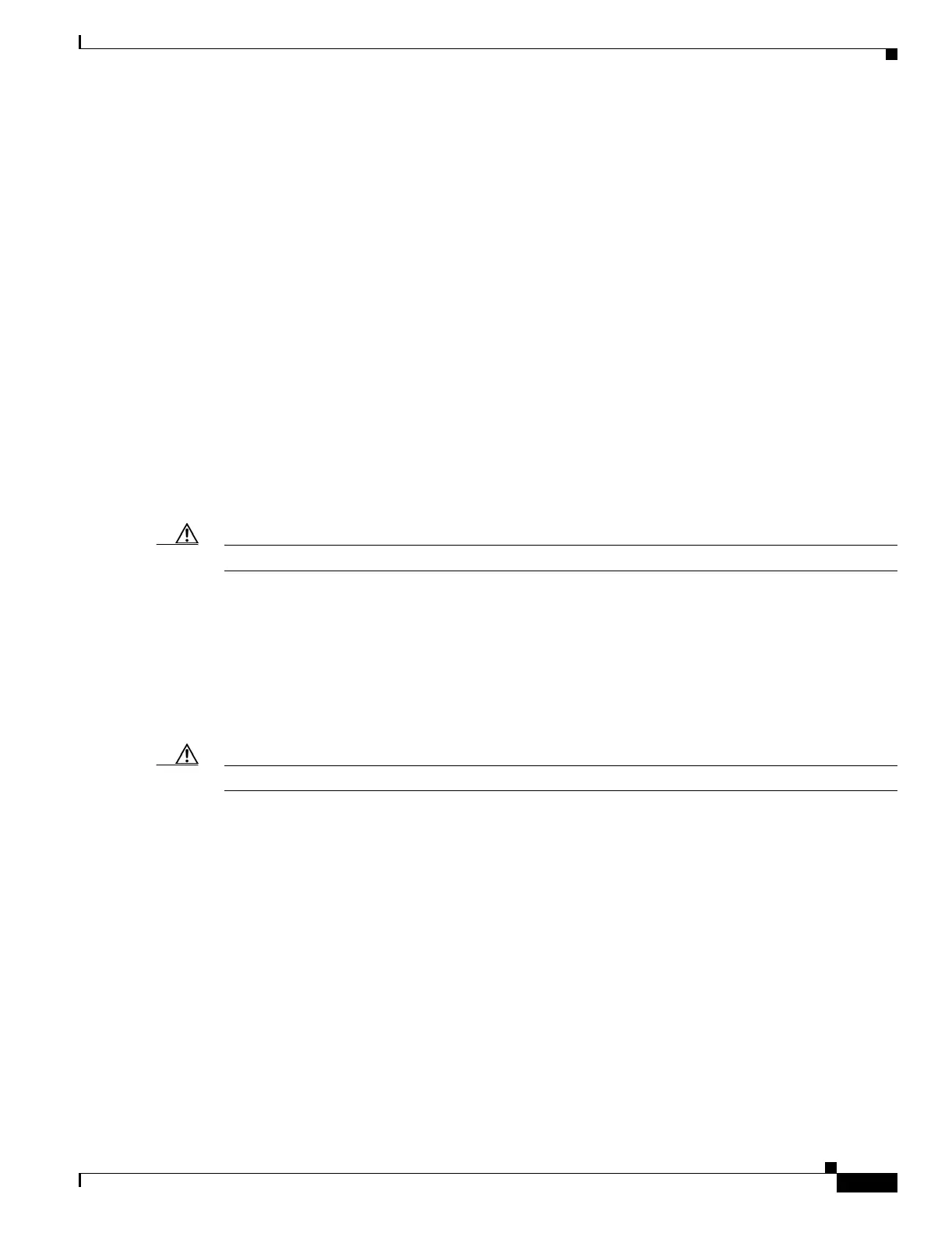B-19
Catalyst 2950 and Catalyst 2955 Switch Software Configuration Guide
78-11380-12
Appendix B Working with the Cisco IOS File System, Configuration Files, and Software Images
Working with Software Images
This example shows how to store a startup configuration file on a server:
Switch# configure terminal
Switch(config)# ip rcmd remote-username netadmin2
Switch(config)# end
Switch# copy nvram:startup-config rcp:
Remote host[]? 172.16.101.101
Name of configuration file to write [switch2-confg]?
Write file switch2-confg on host 172.16.101.101?[confirm]
![OK]
Clearing Configuration Information
You can clear the configuration information from the startup configuration. If you reboot the switch with
no startup configuration, the switch enters the setup program so that you can reconfigure the switch with
all new settings.
Clearing the Startup Configuration File
To clear the contents of your startup configuration, use the erase nvram: or the erase startup-config
privileged EXEC command.
Caution You cannot restore the startup configuration file after it has been deleted.
Deleting a Stored Configuration File
To delete a saved configuration from flash memory, use the delete flash:filename privileged EXEC
command. Depending on the setting of the file prompt global configuration command, you might be
prompted for confirmation before you delete a file. By default, the switch prompts for confirmation on
destructive file operations. For more information about the file prompt command, see the Cisco IOS
Command Reference for Release 12.1.
Caution You cannot restore a file after it has been deleted.
Working with Software Images
This section describes how to archive (download and upload) software image files, which contain the
system software, Cisco IOS code, and the embedded device manager software.
You can download a switch image file from a TFTP, FTP, or RCP server to upgrade the switch software.
You can replace the current image with the new one or keep the current image in flash memory after a
download.
You upload a switch image file to a TFTP, FTP, or RCP server for backup purposes. You can use this
uploaded image for future downloads to the same switch or another of the same type.
The protocol that you use depends on which type of server that you are using. The FTP and RCP
transport mechanisms provide faster performance and more reliable delivery of data than TFTP. These
improvements are possible because FTP and RCP are built on and use the TCP/IP stack, which is
connection-oriented.

